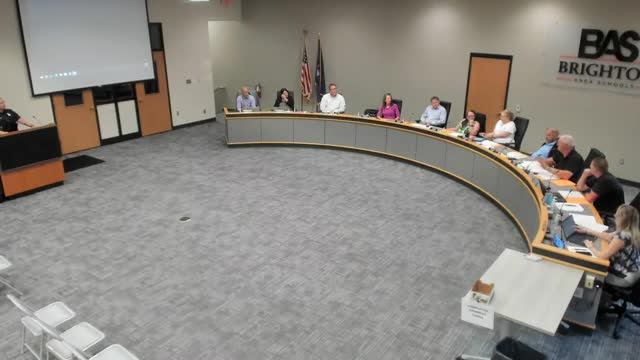School safety protocols spark debate over emergency responses
August 12, 2024 | Brighton Area Schools, School Boards, Michigan
This article was created by AI summarizing key points discussed. AI makes mistakes, so for full details and context, please refer to the video of the full meeting. Please report any errors so we can fix them. Report an error »

During a recent government meeting, discussions centered on the protocols surrounding school emergencies, particularly in relation to medical incidents involving students. A board member expressed concerns about the appropriateness of a recent lockdown procedure initiated during a student seizure, arguing that it was not a situation warranting such a drastic response. The member emphasized the importance of clear communication with students during emergencies, noting that while the situation was serious, it did not constitute an all-out emergency.
The board member highlighted the need for careful language when describing emergency protocols, distinguishing between a lockdown and a shelter-in-place order. They stressed that lockdowns should only be used in severe situations, as miscommunication could lead to unnecessary panic among students. The member also reflected on the evolution of safety protocols in schools, comparing current practices to past norms where classrooms operated with open doors.
The meeting transitioned to a call for public comments, but no attendees chose to address the board. Following this, the board moved into a closed session to discuss confidential attorney-client communications, with all members voting in favor of the motion.
The discussions underscore the ongoing challenges schools face in balancing safety with the emotional well-being of students, particularly in an era marked by heightened awareness of security protocols. The board's commitment to refining their emergency response strategies reflects a proactive approach to ensuring a safe learning environment.
The board member highlighted the need for careful language when describing emergency protocols, distinguishing between a lockdown and a shelter-in-place order. They stressed that lockdowns should only be used in severe situations, as miscommunication could lead to unnecessary panic among students. The member also reflected on the evolution of safety protocols in schools, comparing current practices to past norms where classrooms operated with open doors.
The meeting transitioned to a call for public comments, but no attendees chose to address the board. Following this, the board moved into a closed session to discuss confidential attorney-client communications, with all members voting in favor of the motion.
The discussions underscore the ongoing challenges schools face in balancing safety with the emotional well-being of students, particularly in an era marked by heightened awareness of security protocols. The board's commitment to refining their emergency response strategies reflects a proactive approach to ensuring a safe learning environment.
View full meeting
This article is based on a recent meeting—watch the full video and explore the complete transcript for deeper insights into the discussion.
View full meeting
